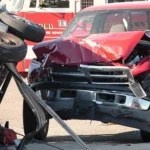
Car accidents can happen for many reasons, ranging from driver error to mechanical failure. One factor that is often overlooked is the condition of the road itself. In California, where traffic is heavy and weather can vary dramatically across regions, defective or poorly maintained roads play a significant role in vehicle collisions. Understanding how these conditions contribute to accidents is essential for both prevention and legal recourse.
What Counts as Defective Road Conditions
Defective road conditions encompass a range of hazards that make driving unsafe. Common examples include potholes, uneven pavement, broken guardrails, faded or missing lane markings, malfunctioning traffic signals, and inadequate signage. Poor drainage or debris on the road can also create dangerous situations. When a roadway is not properly maintained, these defects can directly lead to collisions or worsen the severity of accidents that occur.
How Potholes Cause Accidents
Potholes are one of the most common road defects in California. They can cause drivers to lose control, especially at high speeds. Hitting a pothole may result in tire blowouts, bent rims, or suspension damage, all of which can lead to sudden swerving or collisions. In some cases, drivers may try to avoid potholes by abruptly changing lanes, which can put them in the path of other vehicles. Even minor potholes can create hazards that increase the risk of accidents.
The Role of Poor Pavement and Road Design
Uneven or deteriorated pavement contributes to accidents by affecting vehicle stability. Cracks, ruts, and worn surfaces reduce traction and make it harder to maintain control, particularly during wet or rainy conditions. Additionally, poor road design, such as sharp curves without adequate signage or insufficient shoulder space, can create dangerous driving conditions. Roads that are not designed to handle current traffic volumes or speeds may increase the likelihood of collisions.
Faded or Missing Lane Markings
Lane markings guide drivers and help maintain order on busy roads. When these markings are faded or missing, drivers may misjudge lanes, drift into other vehicles, or fail to navigate turns safely. Confusion about right-of-way can lead to side-impact crashes or head-on collisions. Clear, visible lane markings are a simple but critical element in preventing accidents caused by defective road conditions.
Traffic Signals and Signage Issues
Malfunctioning traffic lights and missing or unclear signs are also significant contributors to accidents. Drivers rely on these signals to navigate intersections safely and anticipate hazards. When lights fail or signs are obstructed, the risk of collisions increases. For example, a stop sign that is missing or hidden behind foliage can result in a driver entering an intersection without noticing oncoming traffic, leading to a preventable crash.
The Impact of Debris and Roadway Obstructions
Road debris, including fallen branches, construction materials, or improperly secured loads from other vehicles, can create sudden hazards. Drivers may swerve or brake abruptly to avoid debris, which can trigger chain-reaction accidents. Defective roads that accumulate debris due to poor maintenance exacerbate this problem. Regular inspections and timely cleanup are necessary to reduce these risks.
Weather and Drainage Problems
California’s diverse climate can intensify the dangers of defective road conditions. Heavy rain, fog, or ice in some areas interacts with poor drainage or uneven pavement to create slippery surfaces. Water pooling in potholes or low spots increases the risk of hydroplaning. When drainage systems fail to divert water properly, roads can become treacherous, particularly in areas prone to flooding.
Legal Considerations for Victims
Victims of accidents caused by defective road conditions may have legal options for compensation. In California, local or state government entities are responsible for maintaining roadways. If negligence in road maintenance or failure to repair known hazards contributes to a crash, victims may be able to file a personal injury claim. Evidence is crucial, including photographs of the road defect, accident reports, witness statements, and medical records documenting injuries.
Filing a Claim Against Government Entities
Claims against government agencies in California are subject to specific procedures. Victims must typically submit a notice of claim within a set time frame, often six months from the date of the accident. Failure to meet these requirements can prevent recovery. Consulting with a personal injury attorney experienced in government liability cases ensures that claims are handled correctly and increases the likelihood of obtaining compensation for medical bills, lost wages, pain, and suffering.
Preventing Accidents Related to Road Conditions
While some accidents are unavoidable, drivers can take precautions to minimize risks. Maintaining a safe speed, staying alert for hazards, and avoiding distractions are essential. Reporting dangerous road conditions to local authorities can also help prevent future accidents. Drivers should document any defects they encounter and exercise extra caution in areas known for poor road maintenance.
Conclusion
Defective road conditions are a serious and often underestimated factor in car accidents in California. Potholes, uneven pavement, faded markings, and faulty traffic signals all contribute to collisions that can cause significant injury and property damage. Victims of these accidents have options to pursue compensation, but the process requires careful documentation and legal guidance. Understanding how road defects affect driving safety and knowing the proper steps to take after an accident can protect victims and promote accountability for those responsible for maintaining safe roadways.
- Legal Options After an Injury at a Workplace Event or Outing - December 22, 2025
- How Weather Conditions in California Contribute to Car Accidents - December 17, 2025
- Legal Rights for Injured Passengers in Shared Rides Across So Cal - December 10, 2025